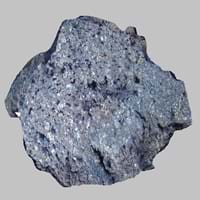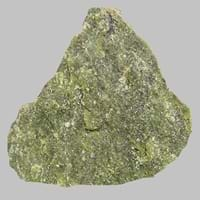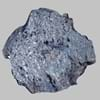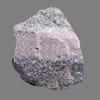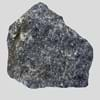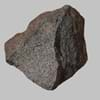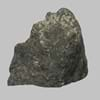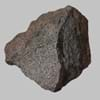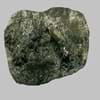Mugearite and Rhyodacite
Definition
Definition
Mugearite is a type of oligoclase bearing basalt, also comprising of olivine, apatite, and opaque oxides
Rhyodacite is an extrusive volcanic rock intermediate in composition between dacite and rhyolite
History
Origin
Skye, Scotland
USA
Discoverer
Alfred Harker
Unknown
Etymology
From mugear + -ite
Rhyo lite + dacite : a rock intermediate between rhyolite and dacite that is the extrusive equivalent of granodiorite
Class
Igneous Rocks
Igneous Rocks
Sub-Class
Durable Rock, Medium Hardness Rock
Durable Rock, Medium Hardness Rock
Family
Group
Volcanic
Volcanic
Other Categories
Opaque Rock
Fine Grained Rock, Opaque Rock
Texture
Texture
Glassy, Massive, Porphyritic, Scoriaceous, Vesicular
Earthy
Color
Black, Brown, Light to Dark Grey
Black to Grey, Dark Greenish - Grey
Maintenance
Less
More
Durability
Durable
Durable
Water Resistant
Yes
Yes
Scratch Resistant
Yes
Yes
Stain Resistant
Yes
No
Wind Resistant
No
No
Acid Resistant
No
No
Appearance
Dull and Soft
Skeletal
Uses
Architecture
Interior Uses
Floor Tiles, Flooring, Homes, Hotels
Decorative Aggregates, Interior Decoration
Exterior Uses
As Building Stone, Garden Decoration
As Building Stone, Garden Decoration
Other Architectural Uses
Curbing
Curbing
Industry
Construction Industry
As Dimension Stone, Cobblestones, Rail Track Ballast, Roadstone
As Dimension Stone, Construction Aggregate, for Road Aggregate, Landscaping
Medical Industry
Not Yet Used
Not Yet Used
Antiquity Uses
Artifacts, Monuments, Sculpture
Artifacts
Other Uses
Commercial Uses
Creating Artwork
Cemetery Markers, Creating Artwork
Types
Types
Alkaline Basalt, Boninite, High Alumina Basalt, Mid Ocean Ridge Basalt (MORB), Tholeiitic Basalt, Basaltic trachyandesite, Mugearite and Shoshonite
Not Available
Features
Has High structural resistance against erosion and climate, Very fine grained rock
Available in Lots of Colors and Patterns
Archaeological Significance
Monuments
Used
Not Yet Used
Famous Monuments
Data Not Available
Not Applicable
Sculpture
Used
Not Yet Used
Famous Sculptures
Data Not Available
Not Applicable
Pictographs
Used
Used
Petroglyphs
Used
Used
Figurines
Used
Not Yet Used
Fossils
Absent
Absent
Formation
Formation
Mugearite forms when lava reaches the Earth's surface near an active volcano. The temperature of lava is between 1100 to 1250° C when it gets to the surface.
Rhyodacite is a fine-grained, hard rock which is a type of metasomatite, essentially altered basalt. It forms with or without crystallization, either below the surface as intrusive rocks or on the surface as extrusive rocks.
Composition
Mineral Content
Olivine, Plagioclase, Pyroxene
Amphibole, Apatite, Biotite, Feldspar, Garnet, Hornblade, Magnetite, Plagioclase, Pyroxene, Quartz, Zircon
Compound Content
Aluminium Oxide, CaO, Iron(III) Oxide, FeO, Potassium Oxide, MgO, MnO, Sodium Oxide, Phosphorus Pentoxide, Silicon Dioxide, Titanium Dioxide
Ca, Fe, Potassium Oxide, NA, Potassium, Silicon Dioxide
Transformation
Metamorphism
Yes
Yes
Types of Metamorphism
Burial Metamorphism, Impact Metamorphism
Burial Metamorphism, Cataclastic Metamorphism, Contact Metamorphism, Hydrothermal Metamorphism, Impact Metamorphism, Regional Metamorphism
Weathering
Yes
Yes
Types of Weathering
Biological Weathering, Chemical Weathering
Biological Weathering, Chemical Weathering, Mechanical Weathering
Erosion
No
Yes
Types of Erosion
Not Applicable
Chemical Erosion, Coastal Erosion, Glacier Erosion
Properties
Physical Properties
Hardness
6
5.5-6
Grain Size
Not Applicable
Fine Grained
Fracture
Conchoidal
Conchoidal
Streak
White to Grey
Black
Porosity
Less Porous
Less Porous
Luster
Not Available
Greasy to Dull
Compressive Strength
37.50 N/mm2
27
200.50 N/mm2
9
Cleavage
Not Applicable
Not Available
Toughness
2.3
2.1
Specific Gravity
2.8-3
2.34-2.40
Transparency
Opaque
Opaque
Density
2.9-3.1 g/cm3
Not Available
Thermal Properties
Specific Heat Capacity
0.84 kJ/Kg K
15
1.12 kJ/Kg K
7
Resistance
Heat Resistant, Pressure Resistant, Wear Resistant
Heat Resistant
Reserves
Deposits in Eastern Continents
Asia
India, Russia
China, India, Iran, Saudi Arabia, Sri Lanka, Taiwan, Thailand, Turkey, Vietnam
Africa
South Africa
Angola, Egypt, Madagascar, Namibia, Nigeria, South Africa
Europe
Iceland
Austria, Belgium, Finland, France, Germany, Italy, Norway, Sardinia, Spain, Switzerland
Others
Not Yet Found
Not Yet Found
Deposits in Western Continents
North America
Canada, USA
Canada, USA
South America
Brazil
Not Yet Found
Deposits in Oceania Continent
Australia
Not Yet Found
Not Yet Found
All about Mugearite and Rhyodacite Properties
Know all about Mugearite and Rhyodacite properties here. All properties of rocks are important as they define the type of rock and its application. Mugearite and Rhyodacite belong to Igneous Rocks.Texture of Mugearite is Glassy, Massive, Porphyritic, Scoriaceous, Vesicular whereas that of Rhyodacite is Earthy. Mugearite appears Dull and Soft and Rhyodacite appears Skeletal. The luster of Mugearite is not available while that of Rhyodacite is greasy to dull. Mugearite is available in black, brown, light to dark grey colors whereas Rhyodacite is available in black to grey, dark greenish - grey colors. The commercial uses of Mugearite are creating artwork and that of Rhyodacite are cemetery markers, creating artwork.
|
||
|
||
|
